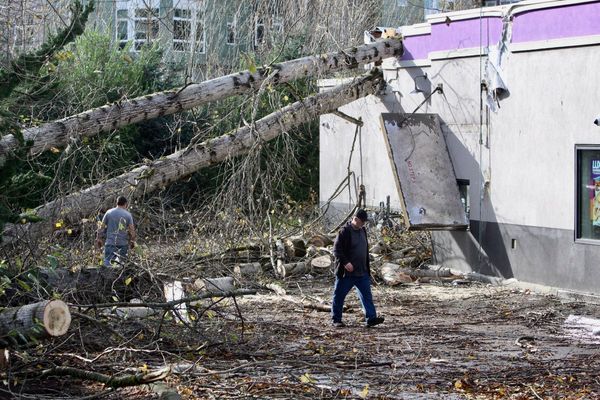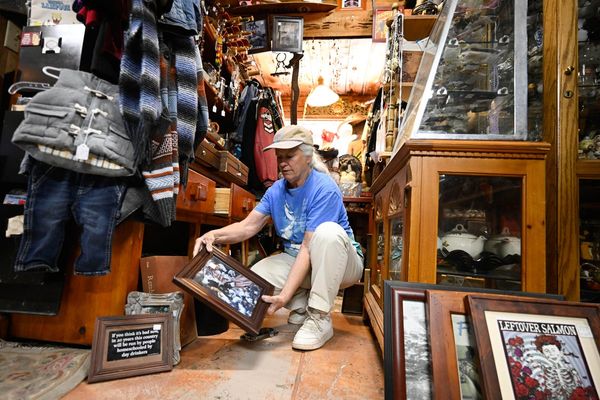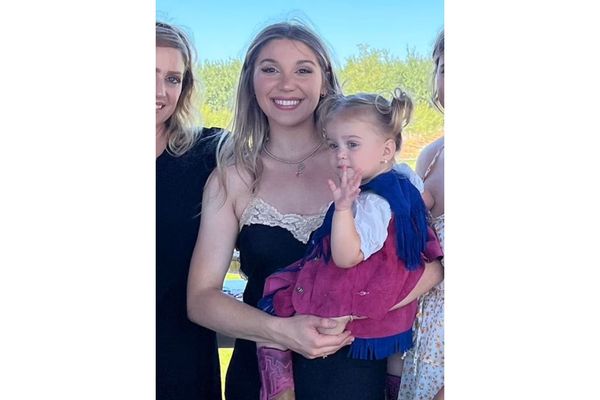Orhan Karakaya has been in and out of hospital his entire adult life because of ulcerative colitis.
Never in that time has he seen New South Wales doctors take strike action, but with a drip in his arm, Karakaya came out to support the rally outside Westmead hospital.
Tuesday was the first of three days of industrial action being taken by public sector doctors in NSW, who say they have the worst wages and working conditions of doctors anywhere in the country.
“I think it’s a ridiculous joke they’re having to be here and strike. They don’t want to strike, they want to care for us,” Karakaya said.
“They need to be respected not only in their job, but in their pay. They do a wonderful job. I can’t speak highly enough about the good service.”
The doctors’ union, the Australian Salaried Medical Officers’ Federation (Asmof), said patient safety would not be compromised during the action, with emergency departments and critical care units to remain safely staffed, and only non-urgent procedures postponed.
Asmof’s president, Dr Nicholas Spooner, said: “Doctors are not asking for the world. We’re asking for safe working hours, a minimum 10-hour break between shifts, and proper staffing so people don’t have to wait hours to see a doctor in emergency.”
On Tuesday afternoon, the NSW health minister, Ryan Park, said the state was “seeing impacts across the board”.
He said that as a result of the first six hours of the industrial action, 372 elective surgeries had been cancelled and 21 beds closed in hospitals. Of the beds closed, 20 were short-stay beds in emergency departments. There were also 3,020 outpatient clinics and services cancelled, including 486 oncology appointments, Park said.
The government estimated about 3,500 doctors had taken industrial action on Tuesday, a number Park said was likely to fluctuate over different shifts in coming days.
The NSW health deputy secretary, Matthew Daly, said that after Asmof provided the government with more information about its industrial plans, he was “feeling a high level of confidence about maintaining safe and accessible services”.
The union had ensured that public holiday staffing levels were maintained as a minimum, which Asmof councillor Dr Tom Morrison said meant the number of doctors rostered on emergency and intensive care remained the same, but there were fewer rostered on wards.
NSW Health’s up-to-date emergency department data showed performance over the 90% benchmark, but Daly noted that this could deteriorate.
Ian Lisser, Asmof NSW’s manager of industrial services, said the response and turn out members was tremendous – “far, far exceeding our expectations”.
“Last week, we had 5,000 members confirmed taking industrial action. That figure has blown out to 7,000 after NSW Health sent out its heavy-handed threatening emails.”
Not all of the more than 7,000 doctors participating in the action across the three days will walk off the job, with numbers limited based on the union’s discussions with senior staff within each hospital’s departments about what action could be taken without compromising patient safety.
Dr Lucy Bates, a uro-gynaecologist for western Sydney local health district, said she was striking for safe working hours as “my children don’t get to see me”.
“They can go days without seeing me because of the hours that we’re putting in,” Bates said.
“I’m also striking to try to keep the good people in the health system; we are burned out, walking out because we’re not getting enough support.”
According to the union, doctors were striking in response to chronic doctor shortages across NSW hospitals, unsafe hours (including widespread 16-hour back-to-back shifts), fatigue and burnout, leading to staff resignations and poor retention, with NSW doctors leaving for significantly better conditions interstate and a lack of genuine negotiation with the government.
The union said better working conditions could attract more staff and rosters could be better filled with safe working hours.
Doctors are demanding a 30% pay increase over a “reasonable” period of time to bring their pay into line with other states.
The Minns government has offered a 10.5% increase over three years, but it has acknowledged doctors – like all public sector workers – have suffered “wage suppression” because of the previous Coalition government’s wage cap.
Asmof has proceeded with the industrial action in defiance of orders from the Industrial Relations Commission to refrain from doing so.
Park said the government had offered on Monday to give junior doctors a separate pay increase as quickly as possible, noting the pay gap for workers “not on significantly high wages” with counterparts in other states.
NSW junior doctors are paid $78,000 annually – $12,000 less than what they could earn in Queensland’s public system.
But Park said the union did not want to separate junior and senior pay.
Dr Mark Priestley told the Westmead rally on Tuesday: “We’re here because we want to see total award reform.”
“We’re here because we want to be here for our patients.
“I’m very proud of my colleagues, not just for being here today, but for staying in the public health system.”
Doctors are walking out, he said, because they have been in discussions with the government for more than a year without seeing meaningful award reform.
Priestley said doctors were asking for “simple conditions”, such as obstetricians being paid for coming in after hours to deliver a baby.
“We want simple things that any man in the street, any patient, would expect – and [that] exist in other states.”
Dr Zachary McPherson, a paediatrician and Asmof member, said there were huge vacancy and resourcing issues. He said waiting lists in “fully staffed” departments stretch into the years because there had been no change in staff numbers despite significant population growth.
This article was amended on 11 April 2025. We originally reported that 486 chemotherapy appointments had been cancelled when it was 486 oncology appointments cancelled, due to a statement issued and later corrected by NSW Health.







